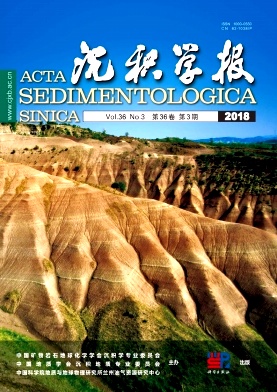Study on Characterization and Mechanism of Thermal Evolution of Green River Shale Kerogen by Flash Stepwise Pyrolysis
doi: 10.14027/j.issn.1000-0550.2018.083
- Received Date: 2017-08-20
- Rev Recd Date: 2017-11-09
- Publish Date: 2018-06-10
-
Key words:
- Green River shale /
- kerogen /
- flash stepwise pyrolysis /
- biomarkers /
- evolution characteristics
Abstract: Flash stepwise pyrolysis provide more efficient information than the simple one step pyrolysis for the same samples. This technique could be used to study on the specific thermal evolution trends of kerogen (or other samples) and its changes of structural characteristics effectively with temperature increased. In this study, thermal simulation analysis of was carried out by flash stepwise pyrolysis on the kerogen samples of the Green River shale at seven heating temperatures separatedly. There was almost no pyrolysed products at 300℃ while a little absorbed hydrocarbons appeared at 350℃. Three pyrolysis temperatures were enriched in pyrolysates at 400℃, 450℃and 500℃, respectively, and the pyrolysis products reached a peak at 450℃. The products were mainly in pairs of n-alkanes and n-alkenes, accompanied by the gradual reduction of isoprenoids and long carbon hydrocarbons, prist-1-ene was the dominated single component at both 400℃and 450℃.; There were only a very small quantity of hydrocarbons liberated at 550℃. After 600℃, pyrolysates almost disappeared, indicating the thermal cracking mainly occurred at lower temperatures. These results may demonstrate that the pyrolysates by flash stepwise pyrolysis at temperatures from 300℃ to 600℃ with an interval of 50℃ could provide enough information for the study of thermal evolution and hydrocarbon generation mechanism of kerogen.
| Citation: | HOU XiaoHuan, WU YingQin, WANG ZuoDong, LIU YanHong. Study on Characterization and Mechanism of Thermal Evolution of Green River Shale Kerogen by Flash Stepwise Pyrolysis[J]. Acta Sedimentologica Sinica, 2018, 36(3): 630-638. doi: 10.14027/j.issn.1000-0550.2018.083 |






 DownLoad:
DownLoad: